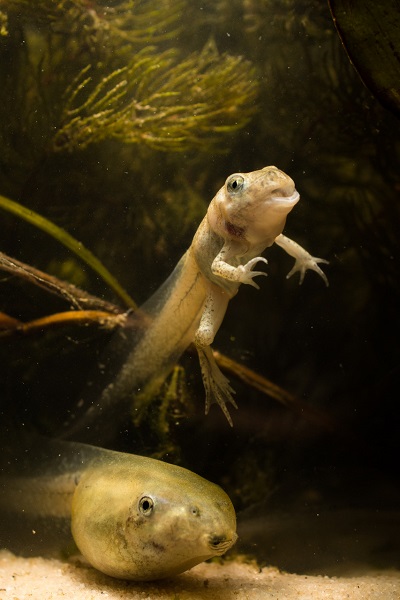That hardcoded genomes can manifest as plastic phenotypes responding to environmental perturbations is a fascinating feature of living organisms. How such developmental plasticity is regulated at the molecular level is beginning to be uncovered aided by the development of omic techniques.
A new research from the Doñana Biological Station has compared the transcriptome-wide responses of two species of spadefoot toads with differing capacity for developmental acceleration of their larvae in the face of a shared environmental risk: pond drying. By comparing gene expression profiles over time and performing cross-species network analyses, the research team identified orthologues and functional gene pathways whose environmental sensitivity in expression have diverged between species.
One of the species, Pelobates cultripes, has a very long larval development (5-6 months) and its tadpoles can reach a large size (> 20 g). However, when the larvae of this species detect that the pond begins to dry out, they can accelerate its development by making a great metabolic effort and precipitate their metamorphosis. In contrast, the species Scaphiopus couchii, from the North American Southwest, has a much more direct and faster larval development. This species completes metamorphosis in a few weeks regardless of environmental conditions.
By studying changes in the gene expression of larvae of these two species experimentally exposed to the risk of desiccation, the research team has identified a group of genes associated with lipid metabolism that reflect differences in plasticity between species.
Genes related to lipid, cholesterol and steroid biosynthesis and metabolism make up most of a module of genes environmentally responsive in one species, but canalized in the other. The evolutionary changes in the regulation of the genes identified through these analyses may have been key in the genetic accommodation of developmental plasticity in this system.
Referencia:
H Christoph Liedtke, Ewan Harney, Ivan Gomez-Mestre. Cross-species transcriptomics uncovers genes underlying genetic accommodation of developmental plasticity in spadefoot toads. Molecular Ecology. https://doi.org/10.1111/mec.15883
https://onlinelibrary.wiley.com/doi/10.1111/mec.15883

 Las altas temperaturas están provocando que las lagunas y las marismas de Doñana pierdan agua rápidamente
Las altas temperaturas están provocando que las lagunas y las marismas de Doñana pierdan agua rápidamente




